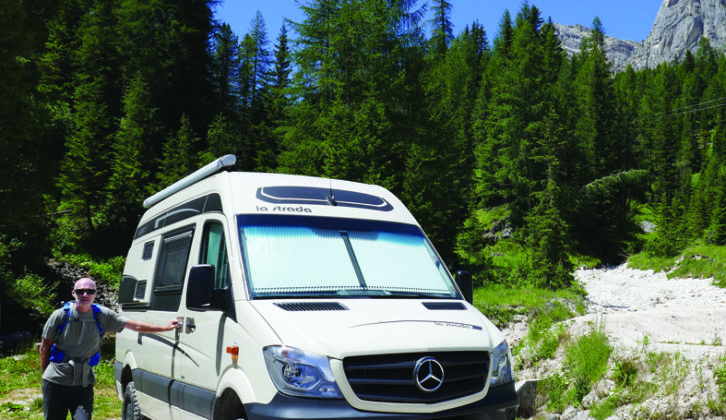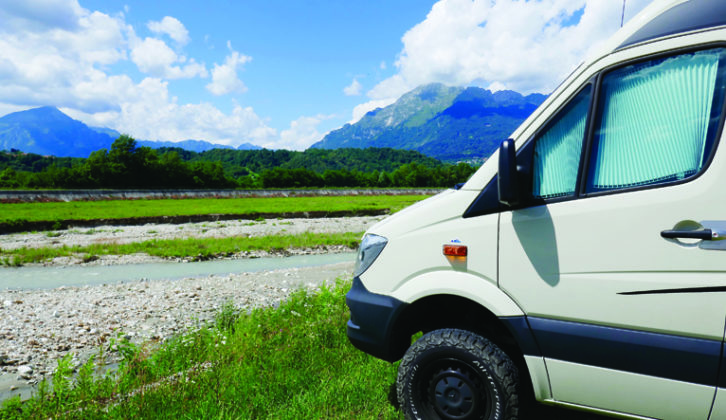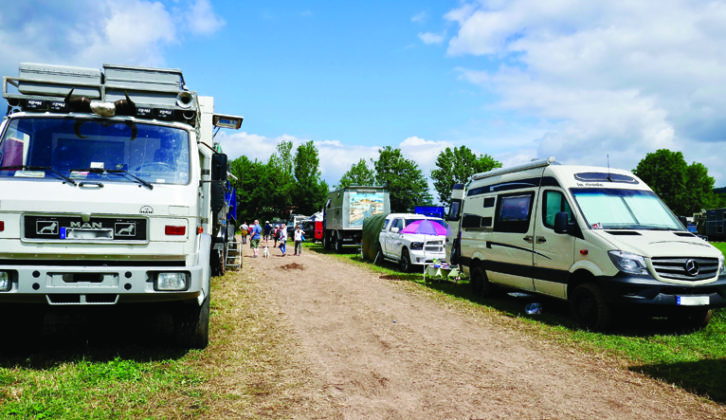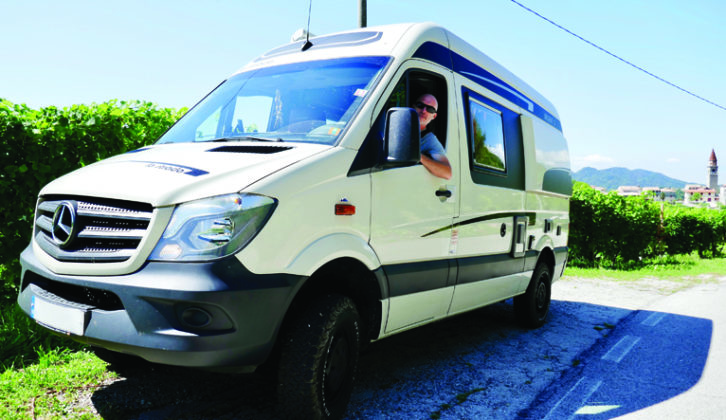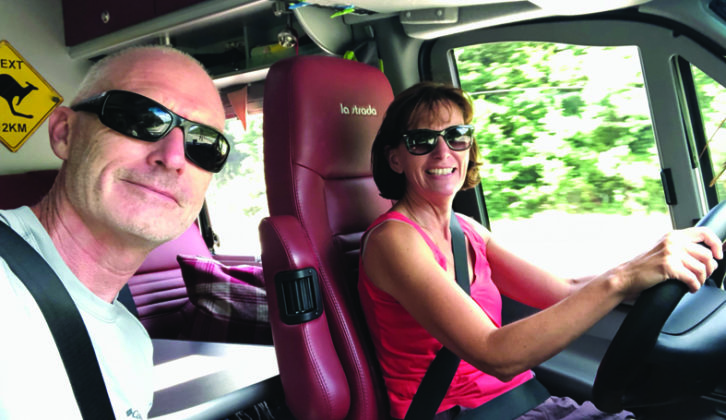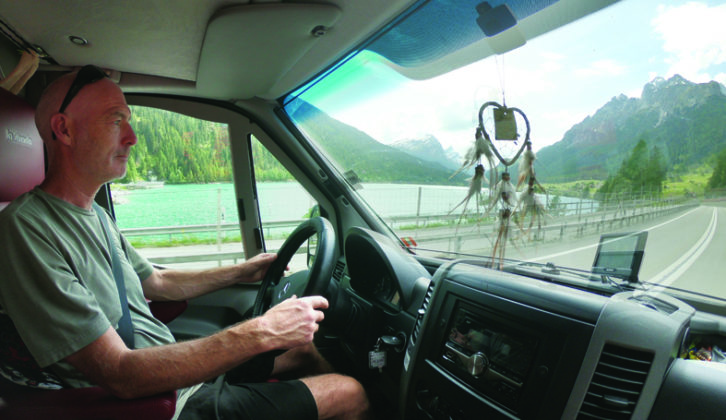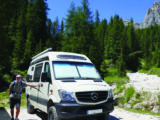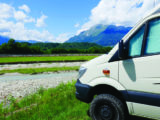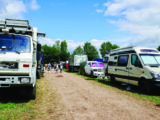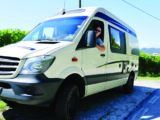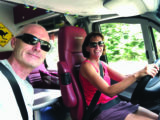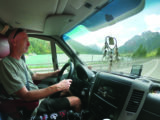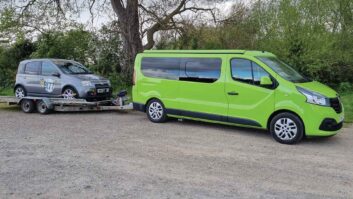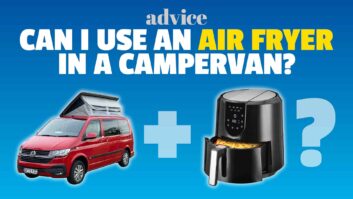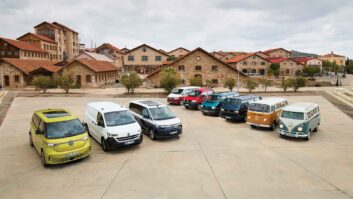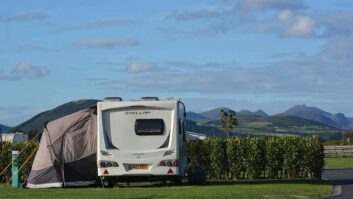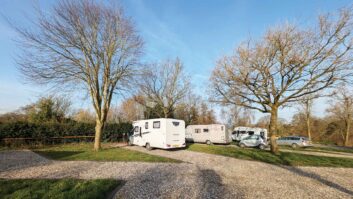Touring Austria in our A-class, we caught a glimpse of two unfamiliar 4×4 motorhome-type vehicles. Both had set-up camp on the shores of a lake and were fully equipped with the most adventurous looking kit that you could possibly imagine.
These two 4×4 campers were from what we now know to be Azalai, the French overland adventure motorhome firm. This chance glimpse on a summer trip not only changed our perception of what we wanted from a ‘van, but led us on a two-year search for a 4×4, after years of owning conventional ‘vans.
For us, this was a new area. Although we knew just about everything there was to know about motorhomes, we knew nothing about what was available in the 4×4 adventure market. What we did know was that after years of motorhome trips across Europe, as much as we loved motorhomes and our travels in them, we were, in reality, a little bored with our ‘van and the limitations of its size and general build.
In terms of the type of touring we planned, we felt ready to try a few ore adventurous locations, maybe even some longer overland journeys and a chance to ship across the water, perhaps to Canada. With our adult children no longer dependent on us, we were also regaining our couple status.
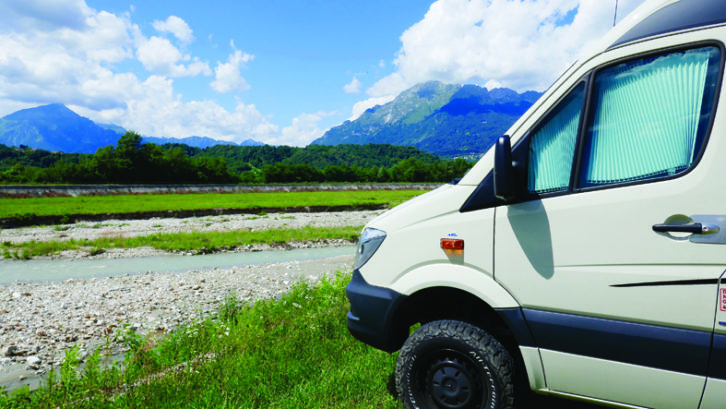
Our search began in earnest at Europe’s main motorhome show, the Caravan Salon in Düsseldorf, Germany. Overland campers of all descriptions are much more popular across the Channel, particularly in Germany, where most manufacturers are based.
Two separate visits to the Düsseldorf show immersed us in the market and enabled us to continue our research about what was on offer from back in the UK – totally invaluable when searching for this type of vehicle.
What we considered
The big question whenever you change a motorhome is which size and layout to go for, and this is really no different with a 4×4 model.
What we really wanted was greater flexibility from our motorhome, combined with practical elements, longevity and reliability factors. But above all, it had to be within budget.
One thing is certain: when you start looking at this niche market of the 4×4 overland motorhome, the pricing can have you reaching for smelling slats!
We decided that we wanted a ‘van under 6m long, so it would fit into a normal-length parking spot when we were doing more standard trips.
The shorter length would also be beneficial when paying for ferries and worldwide shipping costs, which are very much based on motorhome size.
With shipping services, every inch affects the end price and the vehicle value reflects insurance costs and carnet de passages deposits – more reason to ensure budgets were kept sensible.
We decided quickly about a few essentials, such as it being a ‘van that we could stand up in, with a proper roof. Sounds simple enough, but many 4×4 campers have a pop-up roof.
A shower room, fixed bed and a one-piece construction were also preferred, which meant that a panel van conversion would suit us best, as opposed to a standard 4×4-derived camper conversion, such as a Land Rover Defender.
Other factors important for us included being able to walk through from the cab to the habitation side, and having four fitted seatbelts.
We also wanted a left-hand drive ‘van, to allow for possible trips through South America, where one country permits only left-hand-drive vehicles.
In addition, we spend more time touring in Europe than in the UK, and the left-hander costs less to buy than a right-hand-drive.
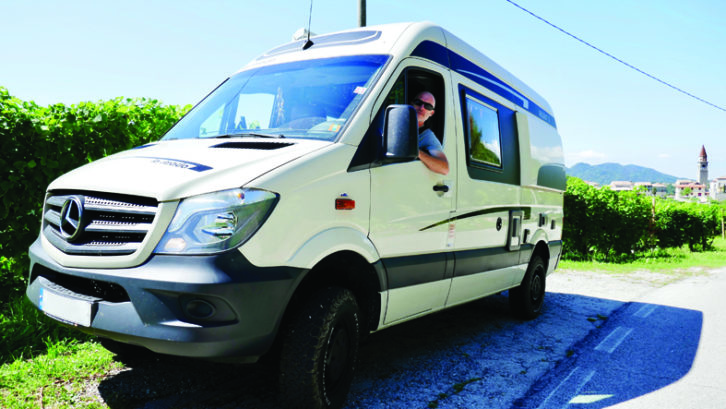
Finally, our new motorhome had to be simple in other ways, keeping electronic switches to a minimum, so that there was less to go wrong.
When we were considering travels to remote locations, we had to be sensible, thinking about where parts could be sourced if they went wrong and the potential cost involved.
Sturdy steel wheels instead of alloys were also on the list, these being easier to have repaired on the road if they were damaged.
Where to buy a 4×4
After much deliberation, we made our decision on the base vehicle, which was to be a Mercedes Sprinter 4×4.
Next came the choice of conversion company. There were three building on the Sprinter 4×4 chassis: CS. HRZ and La Strada. All German manufacturers who either had no dealers in the UK or, in the case of La Strada, one dealer – Elite Motorhomes – with no models in stock. (The La Strada dealership is now Webbs, and Hymer is now also offering a Sprinter 4×4 camper).
Fortunately, all of these firms were exhibiting at the show in Stuttgart, Germany, so this was our next stop.
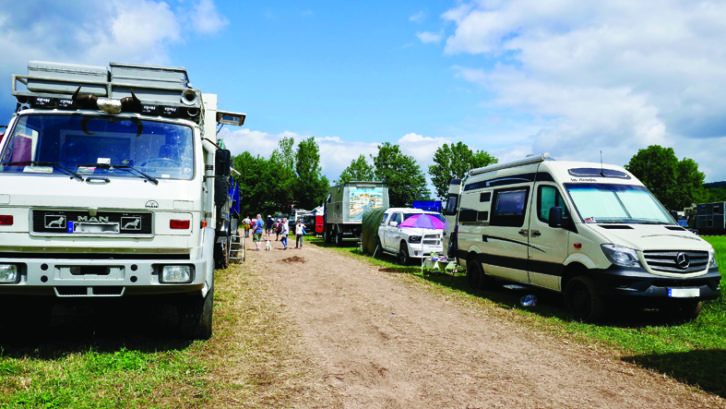
Unfortunately, another important show – Abenteuer & Allrad, the 4×4 camper show at Bad Kissingen – was on too late for us, but it does have every possible 4×4 camper on display. One thing is certain: it’s worth spending time and money on planning and research.
Our flights to Germany were money well spent, we thought, and the benefit of seeing everything in one location saved time in the long run.
Be prepared to consider importing from Germany if there is no UK dealer. If you do this, the motorhome will require a Certificate of Conformity.
What we chose
After two days at the Stuttgart Show, we realised that the one for us was the La Strada Regent S 4×4.
CS and HRZ were equally impressive: both offered a similar fixed-bed layout and standard equipment, and the staff were all extremely knowledgeable.
We had no language barrier problems; we don’t speak German, but each stand had an English-speaking member of staff to guide us through the options.
All of our requirements were chosen at the show – it’s much easier when you can see the ‘van, look at the options available and talk it through with the experts, to discuss exactly what they can provide.
We found La Strada very helpful; nothing was too much trouble and they happily spent lots of time explaining the ‘van to us in detail.
The final order had to be done back in the UK with their dealer at that time, Elite Motorhomes, who were equally helpful. This also made the process much easier, as we had no collection from Germany or import to arrange once the motorhome was built.
The lead time on our build was seven months, but delays meant that the ‘van wasn’t actually ready for collection until 10 months after ordering.
The reason given was a shortage of the Mercedes Sprinter 4×4 from the factory itself. So be prepared for possible changes in delivery times when ordering a van base that could be slightly more out of the ordinary.
Accessories and kit
Our Mercedes Sprinter 4×4 is a 316 CDI automatic, a cost option. Pebble Grey – the exterior paint colour we chose – was no extra cost, but the BF Goodrich tyres, allowing for greater off-road flexibility, did add to the standard option provided.
The habitation side of the ‘van had to be practical, with a bright and airy appearance and a contemporary feel – something La Strada is good at.
We upgraded to a red-and-silver colour scheme, with a wipe-clean leather upholstery, appealing to our more adventurous side and carrying the unique elements of the design through to the interior.
We didn’t want to be reliant on gas bottles, so we selected the Truma 6 diesel/electric combination for heating and hot water. We also upgraded the fridge to a Waeco compressor model, which has a 12V supply.
We originally wanted to have a diesel hob fitted, but we were advised against it because of the length of time that it takes to heat up. So we do still have one small gas bottle for this.
The toilet is chemical-free, with a SOG system, to make it more environmentally friendly. We also chose to have a solar panel and a larger battery, as well as an inverter big enough to power my hairdryer. We didn’t want to be limited by the need to find an electric hook-up for charging, so long periods off-grid are not a problem.
Added comfort
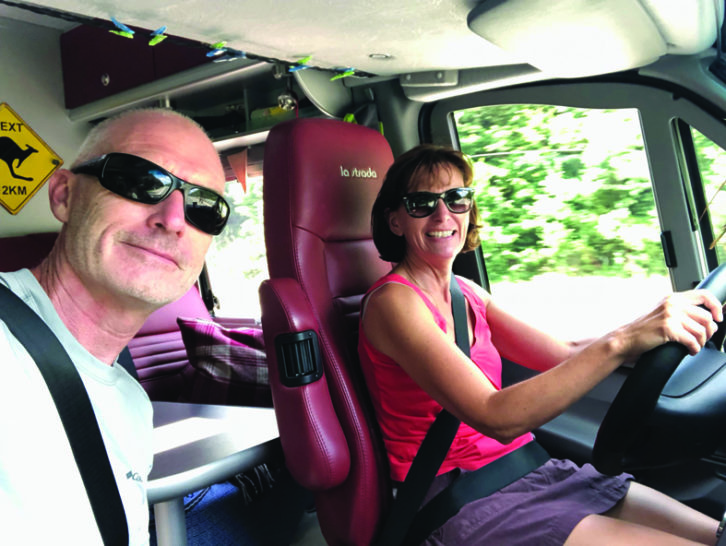
A comfort pack upgrade included an electric step, a flyscreen for the side door and extra speakers. We also added lumbar-support swivel seats, some extra 12V sockets in the habitation area and blinds on the cab windows.
Instead of a bike rack, we bought two folding bikes, which fit neatly in the back below the bed. We didn’t want a TV, so there was no need for a satellite dish, and we did keep the Mercedes extras to a minimum, so no fancy buttons on the steering wheel.
An awning was fitted and, although we didn’t choose a spare tyre, we did buy an Overland puncture repair kit and spare inner tubes, for all those inevitable off-road adventures!
If you’ve enjoyed reading this article, why not get the latest news, reviews and features delivered direct to your door or inbox every month. Take advantage of our brilliant Practical Motorhome magazine SUBSCRIBERS’ OFFER and SIGN UP TO OUR NEWSLETTER for regular weekly updates on all things motorhome related.
We felt ready to try more adventurous locations, maybe even some longer overland journeys and a chance to ship across the water, perhaps to Canada
